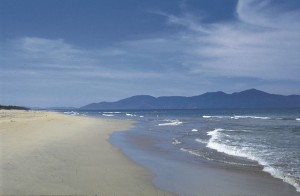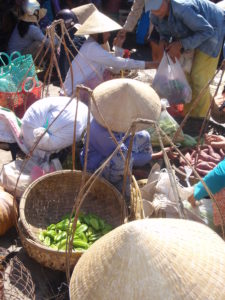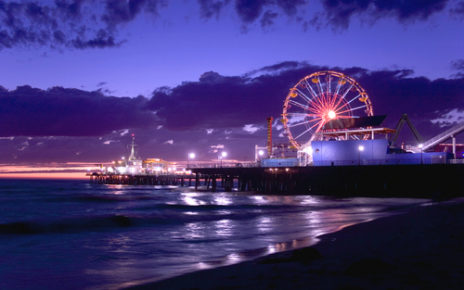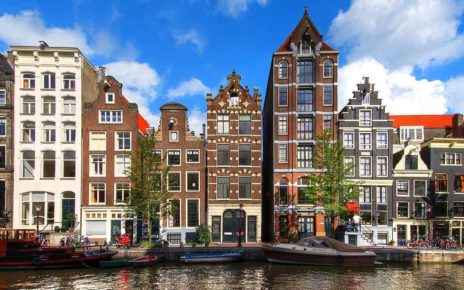From April to August, while the rest of Vietnam struggles with rain and strong humidity, Vietnam’s central areas tend be largely dry and hot. This anomalous gap in weather pattern is the perfect opportunity escape on a series of Vietnam tours, get some beach time down and dodge the crowds!
Although resorts are springing up that are a throwbacks to overcrowded regions of the Costa del Sol, Vietnam has largely managed the rise in tourist numbers well. That Vietnam also 1,000 miles of coastline is a help! Central Vietnam has four major hubs: Danang, Nha Trang, Hue and Hoi An. All of which you can find affordable accommodation deals at www.expedia.com.vn. Here we’ll cover two contrasting options: Da Nang and Hoi An.
Why I Would Consider Living in Vietnam
Vietnam is more than just a travel destination; it’s a place where the quality of life is surprisingly high, and the pace is relaxed yet productive. One of the things that attracts me most to Vietnam is the low cost of living paired with an incredible lifestyle. You can enjoy beautiful beaches, bustling cities, and mouth-watering food, all at a fraction of the price you’d pay in other parts of the world. Plus, for anyone with an entrepreneurial spirit, starting a business in Vietnam is relatively easy. The government has made great strides in encouraging foreign investment, and the process to set up shop is straightforward. Whether you’re opening a café in Da Nang or running an online business from the comfort of your beachside bungalow, Vietnam offers countless opportunities for business-minded expats looking for a new home base.

Da Nang:
Da Nang is the region’s tourist hub. It’s home to the largest regional airport (international). After a one-hour flight from Saigon, you’ll find crystal white sands, beautiful island scenery and outstanding coral reefs! Beaches of note include the beach at Mỹ Khê and China beach. Many of these sandy stretches were frequented and, arguably, popularized by American troops on R&R during the war. Elsewhere in Danang there is ample room to find a quiet coastal spot, but the areas closer to town tend to be perpetually busy. Of the four hubs, Da Nang has the most ‘vibrant’ nightlife – by this we’re talking a few bars and handful of small nightclubs, all popular with backpacking crowds.
If you yearn to mix beach and culture, then the impressive Long Son Pagoda is worth a visit and the Marble Mountains are arguably the highlight. Said to represent the five elements, these limestone outcrops offer great views of the city, Buddhist retreats and numerous hidden caves, which can make a great photo! For shopping, make your way to the Han Market.
Accommodation options are numerous, but budget options are a little harder to find. Almost all the accommodation in centered on the sea front. An excellent luxury option for your tour is the Fusion Maia. Centrally located this hotel offers a great escape from the hustle and bustle of the city, and the onsite spa is divine! The Mercure and Furama are also solid 4* options. As always, check out TripAdvisor.

Hoi An:
This town is arguably Vietnam’s most-loved but least-known charm. Located just 15 minutes from the coast, the ancient port town of Hoi An has the perfect fusion of location, culture and sheer beauty! Resonating the various trading cultures that have visited and settled in the town the small streets are dotted with French-colonial, Japanese and Chinese shop-fronts. These features are compounded by the town’s lack of urban development and idyllic location on the Thu Bon river. At night, the streets are beautifully illuminated, and by day, open their doors for some of Vietnam’s best shopping. Their specialties include tailoring and an array of crafts. Hoi An is a must for any Vietnam tour!
Elsewhere in the town, you can visit the rather gaudy innards of the Guangdong or Fukien Chinese Assembly hall or mingle with the fish mongers at one of Hoi An’s markets. Perhaps owing to its ethnically diverse history, Hoi An is home to some great restaurants. Try the Mango Rooms for a more modern flavor, any of the amazing patisseries (the cake and coffee are sublime, a more positive legacy of the French!), the NGO-run Streets International or the excellent Casa Verde, all of which are centrally located. If you want to get hands-on, then get yourself to one of the town’s many cooking schools!
Accommodation options on the beach just outside of town (about 15 minutes by cab) are well managed and many have access to the beach, albeit due to shifting sands, a little shallower than expected. Nonetheless, they offer incredible views of the south China Sea and a few islands that dot the coastline. Relaxing by the beach, you’ll watch some of the local fisherman make their daily commute out to sea and the often listless sea bounce back the sun’s rays. All said, coastal accommodation in Hoi An offers great access to town and convenient tranquility. A great little beach spot is the Cua Dai Beach. With rolling white sands dotted with palm trees, it’s a great place to settle down with a book or sit down with a cold beer and watch the sunset!

About the author: Kian is part of the team at Travel Indochina and has traveled extensively throughout Asia. Next on this list is India and he recently returned from Vietnam. Top Asia travel tip: find one of those plastic street-side chairs, order a beer then, sit, watch and listen! Check out Kian’s Google+ profile.




